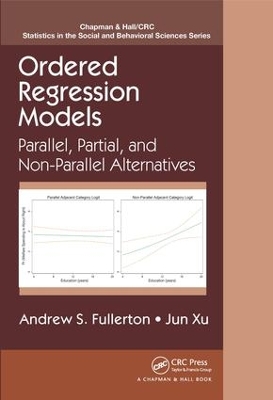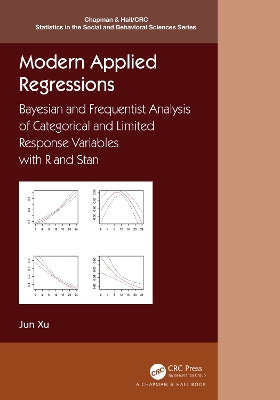Chapman & Hall/CRC Statistics in the Social and Behavioral Sciences
2 total works
Ordered Regression Models: Parallel, Partial, and Non-Parallel Alternatives presents regression models for ordinal outcomes, which are variables that have ordered categories but unknown spacing between the categories. The book provides comprehensive coverage of the three major classes of ordered regression models (cumulative, stage, and adjacent) as well as variations based on the application of the parallel regression assumption.
The authors first introduce the three "parallel" ordered regression models before covering unconstrained partial, constrained partial, and nonparallel models. They then review existing tests for the parallel regression assumption, propose new variations of several tests, and discuss important practical concerns related to tests of the parallel regression assumption. The book also describes extensions of ordered regression models, including heterogeneous choice models, multilevel ordered models, and the Bayesian approach to ordered regression models. Some chapters include brief examples using Stata and R.
This book offers a conceptual framework for understanding ordered regression models based on the probability of interest and the application of the parallel regression assumption. It demonstrates the usefulness of numerous modeling alternatives, showing you how to select the most appropriate model given the type of ordinal outcome and restrictiveness of the parallel assumption for each variable.
Web Resource
More detailed examples are available on a supplementary website. The site also contains JAGS, R, and Stata codes to estimate the models along with syntax to reproduce the results.
Modern Applied Regressions creates an intricate and colorful mural with mosaics of categorical and limited response variable (CLRV) models using both Bayesian and Frequentist approaches. Written for graduate students, junior researchers, and quantitative analysts in behavioral, health, and social sciences, this text provides details for doing Bayesian and frequentist data analysis of CLRV models. Each chapter can be read and studied separately with R coding snippets and template interpretation for easy replication. Along with the doing part, the text provides basic and accessible statistical theories behind these models and uses a narrative style to recount their origins and evolution.
This book first scaffolds both Bayesian and frequentist paradigms for regression analysis, and then moves onto different types of categorical and limited response variable models, including binary, ordered, multinomial, count, and survival regression. Each of the middle four chapters discusses a major type of CLRV regression that subsumes an array of important variants and extensions. The discussion of all major types usually begins with the history and evolution of the prototypical model, followed by the formulation of basic statistical properties and an elaboration on the doing part of the model and its extension. The doing part typically includes R codes, results, and their interpretation. The last chapter discusses advanced modeling and predictive techniques—multilevel modeling, causal inference and propensity score analysis, and machine learning—that are largely built with the toolkits designed for the CLRV models previously covered.
R code and other ancilliary materials can be found on the book's website.

